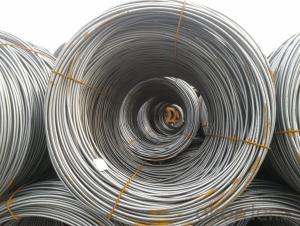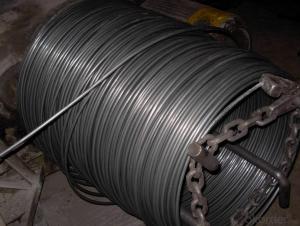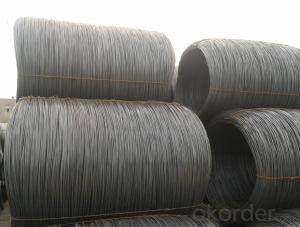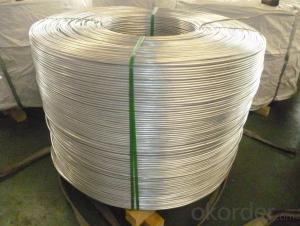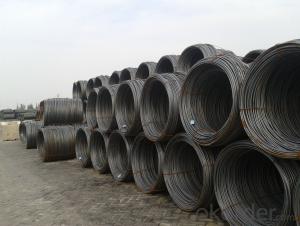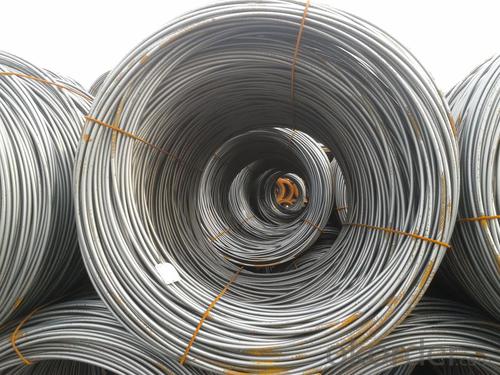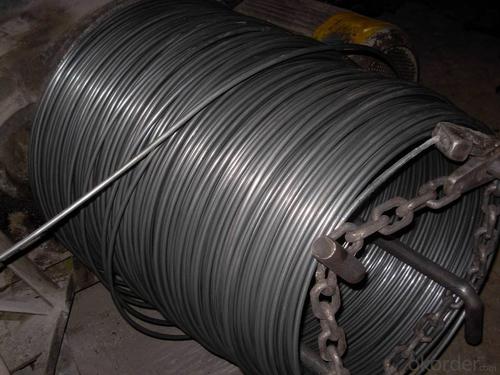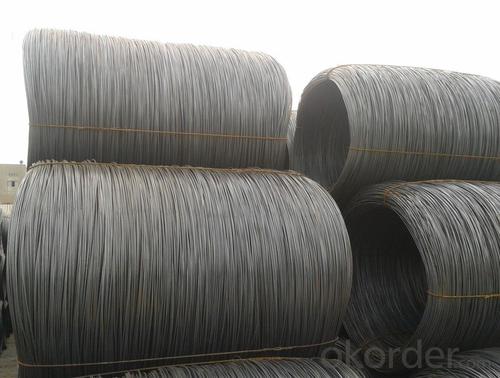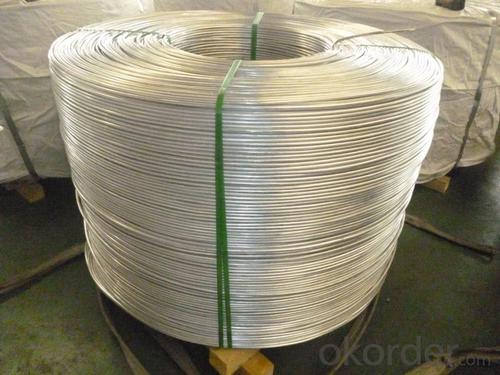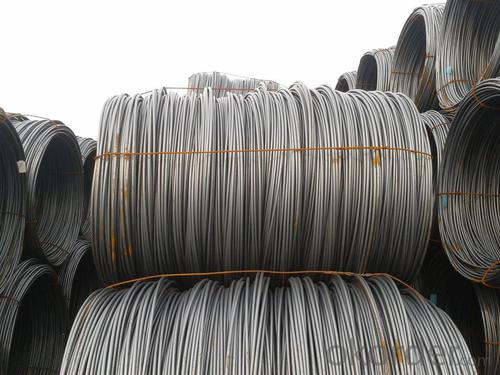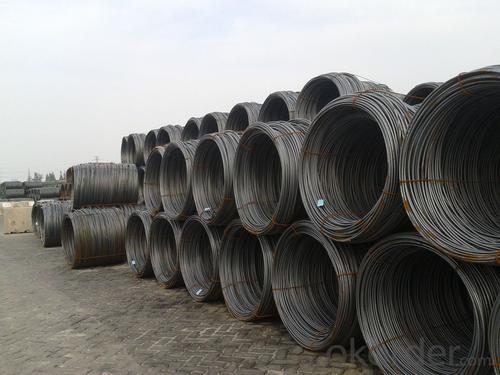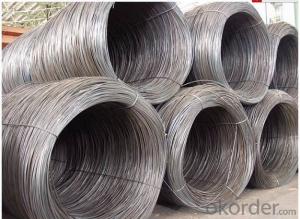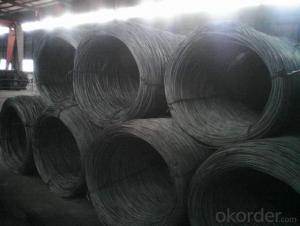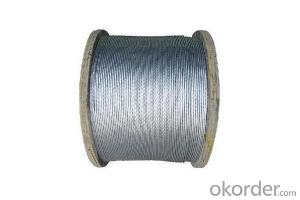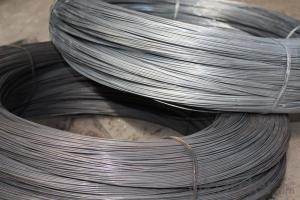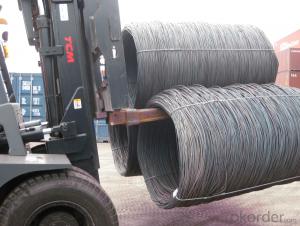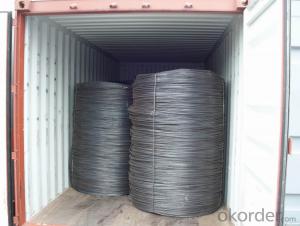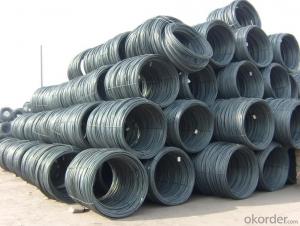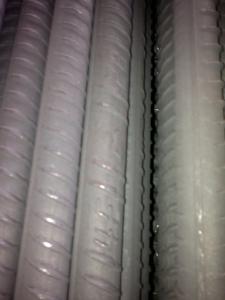SAE1006Cr Carbon Steel Wire Rod 13.5mm for Welding
- Loading Port:
- Shanghai
- Payment Terms:
- TT OR LC
- Min Order Qty:
- 100 m.t
- Supply Capability:
- 30000 m.t/month
OKorder Service Pledge
OKorder Financial Service
You Might Also Like
Specification
Description of SAE1006Cr Carbon Steel Wire Rod 13.5mm for Welding:
OKorder is offering Color Coated Steel Coil Prepainted Steel Coil at great prices with worldwide shipping. Our supplier is a world-class manufacturer of steel, with our products utilized the world over. OKorder annually supplies products to European, North American and Asian markets. We provide quotations within 24 hours of receiving an inquiry and guarantee competitive prices.
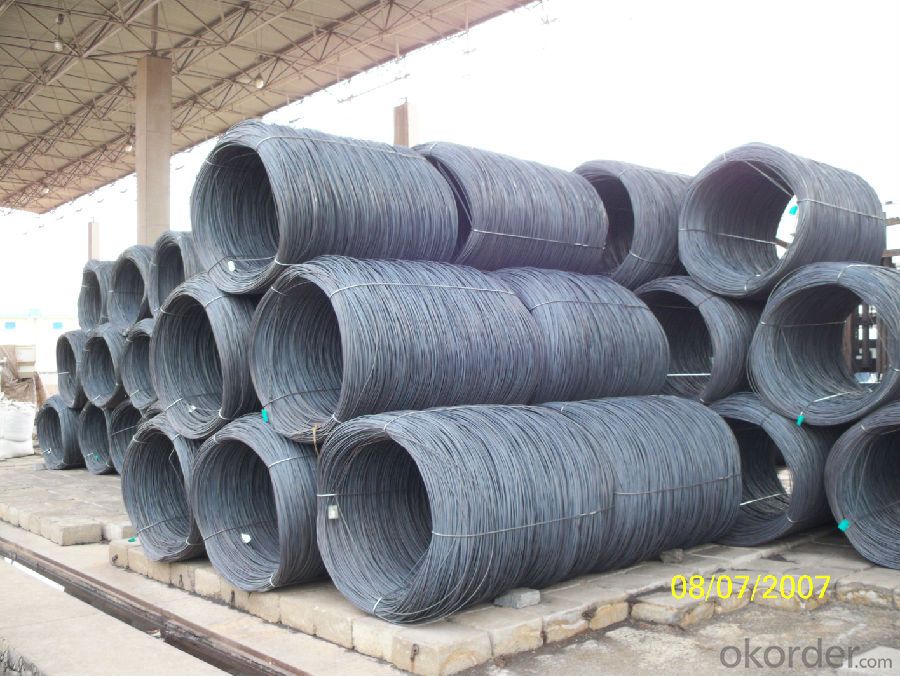
Applications of SAE1006Cr Carbon Steel Wire Rod 13.5mm for Welding:
Color Coated Steel Coil Prepainted Steel Coil are ideal for structural applications and are widely used in the construction of buildings and bridges, and the manufacturing, petrochemical, and transportation industries.
Main Product Features of SAE1006Cr Carbon Steel Wire Rod 13.5mm for Welding:
· Premium quality
· Prompt delivery & seaworthy packing (30 days after receiving deposit)
· Corrosion resistance
· Can be recycled and reused
· Mill test certification
· Professional Service
· Competitive pricing
Specifications of SAE1006Cr Carbon Steel Wire Rod 13.5mm for Welding:
1, Introduction: Color coated steel coils(sheets), i. E. PPGI, also called prepainted steel coils(sheets), are made of galvanized steel coils(sheets) with polymer coatings as surface. It's a new enclosure material and building board with characteristics of light-weighted, heat preserved&insulated, easily installed with bright colors.
2, Production Process: Pretreatment(Degreasing)_Drying_Chromating_Paint Basic Oil_Cooling_Drying_Color Coating_Cooling_Film-covering_Rolling Up
3, Characteristics:
Good at corrosion resistence. Besides zinc coating of the basic plate of galvanized steel sheet, the color coating as the surface has double lifetime to ensure better anticorrosion effect.
With excellent cold bending molded manufacturablity, PPGI products can be processed or directly used as final product. As being light-weighted and conveniently transported, they're widly used to replace wood to save energy.
4.There're thousands of colors can be chosen as per different application. Any color plays well in decoration.
No pollution with high recycling rate, PPGI coils and sheets are strongly recommended as enviroment-friendly products by the government.
5, eye bands and 4 circumferential bands in steel, galvanized metal fluted rings on inner and outer edges, galvanized.
| commodity | SAE1006Cr Carbon Steel Wire Rod 13.5mm for Welding |
| Techinical Standard: | JIS G3302-1998, EN10142/10137, ASTM A755 |
| grade | Q195,Q215,Q235,SAE1006,SAE1008 SAE1006Cr |
| Types: | Mesh welding |
| Base metal | galvanized, galvalume, cold rolled steel |
| Thickness | 0.14-1.0mm(0.16-0.8mm is the most advantage thickness) |
| Width | 610/724/820/914/1000/1200/1219/1220/1250mm |
| Type of coating: | PE, SMP, PVDF |
| Zinc coating | Z60-150g/m2 or AZ40-100g/m2 |
| Top painting: | 5 mic. Primer + 15 mc. R. M. P. |
| Back painting: | 5-7 mic. EP |
| Color: | According to RAL standard |
| ID coil | 508mm610mm |
| Coil weight: | 2--3MT |
| Package: | Properly packed for ocean freight exportation in 20'containers |
| Application: | Industrial panels, roofing and siding for painting/automobile |
| Price terms | FOB, CFR, CIF |
| Payment terms | 20%TT in advance+80% TT or irrevocable 80%L/C at sight |
| delivery time | 25 days after recepit of 20% TT |
| Remarks | Insurance is all risks |
| MTC 3.1 will be handed on with shipping documents | |
| We accept SGS certificatation test |
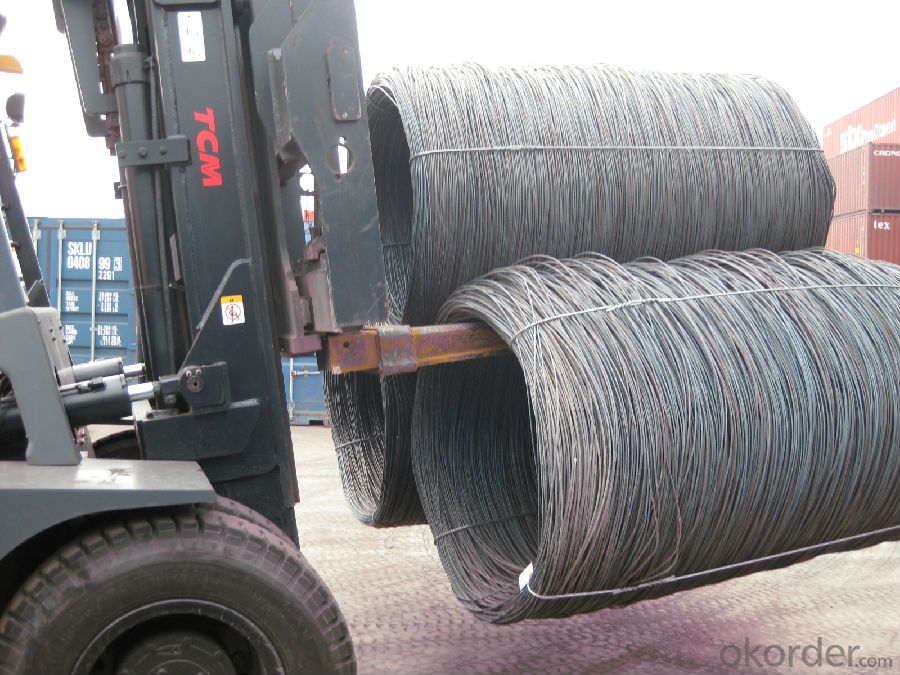
FAQ of SAE1006Cr Carbon Steel Wire Rod 13.5mm for Welding:
Q1: Why buy Materials & Equipment from OKorder.com?
A1: All products offered byOKorder.com are carefully selected from China's most reliable manufacturing enterprises. Through its ISO certifications, OKorder.com adheres to the highest standards and a commitment to supply chain safety and customer satisfaction.
Q2: How do we guarantee the quality of our products?
A2: We have established an advanced quality management system which conducts strict quality tests at every step, from raw materials to the final product. At the same time, we provide extensive follow-up service assurances as required.
Q3: How soon can we receive the product after purchase?
A3: Within three days of placing an order, we will begin production. The specific shipping date is dependent upon international and government factors, but is typically 7 to 10 workdays.
Q4: What makes stainless steel stainless?
A4: Stainless steel must contain at least 10.5 % chromium. It is this element that reacts with the oxygen in the air to form a complex chrome-oxide surface layer that is invisible but strong enough to prevent further oxygen from "staining" (rusting) the surface. Higher levels of chromium and the addition of other alloying elements such as nickel and molybdenum enhance this surface layer and improve the corrosion resistance of the stainless material.
Q5: Can stainless steel rust?
A5: Stainless does not "rust" as you think of regular steel rusting with a red oxide on the surface that flakes off. If you see red rust it is probably due to some iron particles that have contaminated the surface of the stainless steel and it is these iron particles that are rusting. Look at the source of the rusting and see if you can remove it from the surface.
- Q: Can steel wire rod be used in high-temperature applications?
- When using steel wire rod in high-temperature settings, careful consideration must be given to the specific type of steel and the temperatures involved. Some steel grades, like stainless steel or heat-resistant alloys, are specifically designed to maintain strength and structural integrity under high temperatures. These types of steel are commonly used in industries such as aerospace, automotive, and power generation, where exposure to high temperatures is frequent. However, it is important to note that not all steel wire rods are suitable for high-temperature applications. Lower-grade steels may experience a reduction in mechanical properties, such as tensile strength, ductility, and corrosion resistance, when exposed to elevated temperatures. To determine if a particular steel wire rod is suitable for a high-temperature environment, it is essential to refer to the manufacturer's specifications or seek expert advice. In addition to the type of steel, other factors should be considered when using steel wire rod in high-temperature applications. These include the operating conditions, duration of exposure, and the presence of corrosive elements or chemicals. Regular monitoring and maintenance may be necessary to ensure the ongoing performance and safety of the steel wire rod in these environments.
- Q: What are the different types of steel wire rod cooling methods?
- There are several different types of steel wire rod cooling methods that are commonly used in the industry. These methods aim to efficiently cool down the wire rod after it has been processed through the hot rolling mill. The cooling methods can vary depending on the desired properties and specifications of the wire rod. One common cooling method is air cooling. In this method, the wire rod is exposed to ambient air, allowing natural convection to dissipate the heat. This is a cost-effective and energy-efficient method, however, it may not be suitable for all applications as it might not provide the desired cooling rate or uniformity. Another cooling method is water cooling, which involves spraying water onto the wire rod to rapidly cool it down. This method provides a high cooling rate, ensuring quick solidification of the steel and preventing the formation of unwanted structures. Water cooling is widely used in high-speed wire rod mills where a fast cooling rate is necessary to achieve the desired mechanical properties. Oil quenching is another cooling method used for specific applications where the wire rod needs to achieve specific hardness or strength. In this method, the wire rod is immersed in oil, such as mineral oil or polymer-based oil, to rapidly cool it down. Oil quenching allows for controlled cooling rates, resulting in the desired microstructure and mechanical properties. Some advanced cooling methods involve the use of innovative technologies such as forced air cooling or water mist cooling. Forced air cooling utilizes high-velocity air jets to rapidly cool the wire rod, while water mist cooling employs a fine mist of water droplets to achieve efficient cooling. These methods offer enhanced cooling rates and can be tailored to specific requirements. In summary, the different types of steel wire rod cooling methods include air cooling, water cooling, oil quenching, forced air cooling, and water mist cooling. Each method has its advantages and is chosen based on the desired properties and specifications of the wire rod.
- Q: How is steel wire rod used in the manufacturing of tire cords?
- The manufacturing of tire cords relies on steel wire rod because of its strength, durability, and flexibility. Tire cords are the materials that provide strength and stability to the rubber of a tire. In order to create tire cords, the steel wire rod is first drawn through a series of dies to reduce its diameter and increase its tensile strength. This process, called wire drawing, guarantees that the wire rod meets the specific requirements for tire cord manufacturing. Once the wire rod has been drawn to the desired thickness, it undergoes a metal coating process. This process involves applying a layer of brass or zinc to the wire surface to improve its adhesion to rubber. The metal coating also protects the wire from corrosion and enhances its fatigue resistance, ensuring the tire cord's longevity and performance. The coated wire rod is then twisted into strands, usually in a helical pattern, to form tire cord yarns. These yarns are embedded within the rubber matrix during the tire manufacturing process, providing reinforcement and enhancing the tire's structural integrity. The steel wire rod used in the manufacturing of tire cords plays a critical role in improving the strength and durability of the tire. The high tensile strength of the steel wire rod allows the tire cords to withstand the significant forces and loads experienced by tires during operation, such as acceleration, braking, and cornering. Additionally, the flexibility of the wire rod enables the tire cords to conform to the tire's shape and absorb shocks, resulting in a smoother ride and improved overall performance. In conclusion, steel wire rod is an essential component in tire cord production. Its strength, durability, and flexibility make it an ideal material for reinforcing tires, ensuring safety and long-lasting performance on the road.
- Q: What are the common industry certifications for steel wire rod?
- Some common industry certifications for steel wire rod include ISO 9001:2015 for quality management systems, ISO 14001:2015 for environmental management systems, and OHSAS 18001:2007 for occupational health and safety management systems. Additionally, certifications such as ASTM A510/A510M-18, ASTM A370-20, and ASTM A510/A510M-18a may be relevant for specific applications and standards compliance within the steel wire rod industry.
- Q: How is steel wire rod used in the manufacturing of wire forms for jewelry?
- Steel wire rod is an essential material used in the manufacturing of wire forms for jewelry. It is primarily utilized to create intricate and delicate wire shapes and structures that are commonly found in various types of jewelry, such as earrings, necklaces, bracelets, and rings. The steel wire rod is initially processed through a series of steps to transform it into a malleable and workable material. First, it is drawn through a die to reduce its diameter and achieve the desired thickness. This process, known as wire drawing, ensures that the steel wire rod becomes thin and pliable enough to be molded into intricate shapes. Once the wire rod has been drawn, it can be further manipulated and formed into various wire forms for jewelry. Skilled artisans use specialized tools, such as pliers, hammers, and mandrels, to bend, twist, and shape the wire into different designs. These wire forms can be as simple as loops or spirals, or they can be more complex and intricate, depending on the desired jewelry design. The steel wire rod's strength and durability make it an ideal material for creating wire forms that can withstand regular wear and tear. It provides the necessary support for gemstones, beads, and other decorative elements that may be added to the jewelry piece. Additionally, the steel wire rod's resistance to corrosion ensures that the wire forms remain intact and retain their shape over time. Furthermore, steel wire rod is often used as a base material for plating with precious metals such as gold or silver. The wire forms are coated with a thin layer of the desired metal, enhancing their aesthetic appeal and giving them a luxurious finish. This plating process adds value to the jewelry piece and makes it more visually appealing to customers. In summary, steel wire rod plays a crucial role in the manufacturing of wire forms for jewelry. Its malleability, strength, and resistance to corrosion make it an ideal material for creating intricate and durable wire shapes. Whether used as a base material or plated with precious metals, steel wire rod allows artisans to craft stunning and unique jewelry pieces that are both aesthetically pleasing and long-lasting.
- Q: How is the steel wire rod market affected by mergers and acquisitions?
- The steel wire rod market can be significantly affected by mergers and acquisitions. When companies merge or acquire other companies in the industry, it often leads to consolidation and concentration of market share. This can result in increased pricing power, reduced competition, and a more streamlined supply chain. Additionally, mergers and acquisitions can also lead to the integration of complementary technologies and expertise, which may enhance the overall efficiency and innovation in the market. However, it is important to note that such transactions require regulatory approvals and can lead to potential challenges in terms of market competition and fair pricing practices.
- Q: What are the different types of steel wire rod coatings used for improved electrical conductivity?
- There are several types of steel wire rod coatings used for improved electrical conductivity, including copper, tin, silver, and nickel. These coatings help enhance the wire's ability to conduct electricity by reducing resistance and improving the flow of electrical current.
- Q: How is steel wire rod processed to achieve specific properties?
- Steel wire rod goes through a series of manufacturing steps to attain specific properties that make it appropriate for various applications. The process commences with the selection of premium raw materials, usually low carbon steel, which is melted in a furnace to create molten steel. Once the molten steel is formed, it is continuously cast into billets or blooms. These solidify and are then rolled into wire rod form through hot rolling. This hot rolling process involves passing the billets or blooms through a series of rollers to reduce their size and shape them into the desired wire rod dimensions. This step aids in aligning the grain structure of the steel, thereby enhancing its strength and ductility. Following hot rolling, the wire rod undergoes a cooling process to relieve any remaining stress and ensure dimensional stability. It is then subjected to a surface treatment, such as pickling or shot blasting, to eliminate any oxides or scale formed during hot rolling. In order to achieve specific mechanical properties, the wire rod may undergo further processing steps, such as cold drawing or heat treatment. Cold drawing involves pulling the wire rod through a series of dies to decrease its diameter, increase its tensile strength, and improve its surface finish. On the other hand, heat treatment involves subjecting the wire rod to controlled heating and cooling cycles to modify its microstructure, resulting in desired properties like hardness, toughness, or corrosion resistance. Moreover, the wire rod may undergo additional surface treatments, such as coating or galvanizing, to enhance its corrosion resistance or improve its aesthetic appearance. Coating can involve applying a layer of zinc, polymer, or other protective materials, while galvanizing entails immersing the wire rod in a bath of molten zinc to create a protective zinc coating. In summary, the processing of steel wire rod entails a combination of hot rolling, cooling, surface treatment, and potential further processing steps like cold drawing or heat treatment. These steps are meticulously carried out to achieve specific properties, such as strength, ductility, corrosion resistance, and surface finish, rendering the wire rod suitable for diverse applications in industries such as construction, automotive, manufacturing, and more.
- Q: How is steel wire rod used in the manufacturing of reinforcement bars?
- Steel wire rod is used in the manufacturing of reinforcement bars by being hot rolled into a continuous rod shape. This rod is then further processed and stretched to the desired diameter and strength, which is then cut into specific lengths to create reinforcement bars. These bars are commonly used in construction projects to provide added strength and stability to concrete structures such as buildings, bridges, and roads.
- Q: How is steel wire rod used in the manufacturing of wire fencing?
- Steel wire rod is the primary material used in the manufacturing of wire fencing. It is drawn, stretched, and twisted to create the strong and durable wires that form the structure of the fence. These wires are then woven or welded together to create the mesh or chain-link pattern, providing security and containment for various applications such as residential, commercial, and agricultural fencing.
Send your message to us
SAE1006Cr Carbon Steel Wire Rod 13.5mm for Welding
- Loading Port:
- Shanghai
- Payment Terms:
- TT OR LC
- Min Order Qty:
- 100 m.t
- Supply Capability:
- 30000 m.t/month
OKorder Service Pledge
OKorder Financial Service
Similar products
Hot products
Hot Searches
Related keywords
